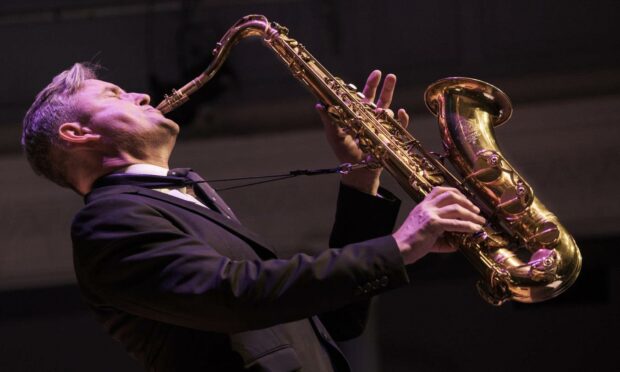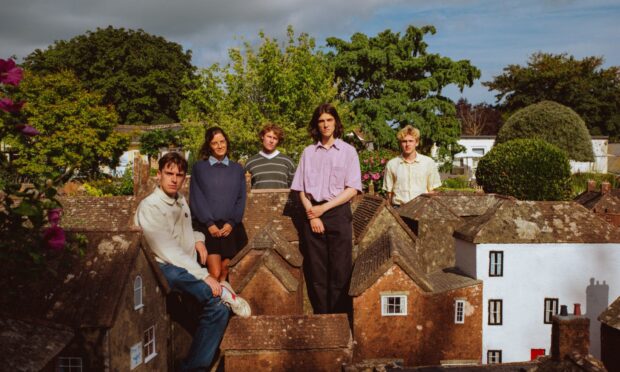A mist moving into Crail on Sunday helped set the mood for the anticipated show by jazz great Tommy Smith at the Community Hall.
A dapper figure in a tailored grey suit, Smith strode onto stage, greeted the audience with purposeful nods, and started to play.
The depth and skill of a musician who can play unaccompanied in a hushed room is compelling.
A stellar career
Smith’s journey through jazz is well-documented; the prodigy from Edinburgh’s Wester Hailes estate who won a scholarship at sixteen to Berklee College of Music in Boston.
There he flourished, driven by talent and his pursuit of discovery in the notes that define each performance.
The notes came on Sunday; ornate fountains of tension-building phrases. Ecstatic cadenzas. Sudden silences, a diminished line – exotic to the ear, but familiar to minds and hearts.
Smith has a vocabulary with vast horizons and intimate suggestions. An hour flashed
past. When he asked: “How long have I been playing?” no one else
seemed to know either.
Without a harmonic instrument to guide the ear, Smith coloured the chord
changes that passed silently but audibly in the mind; mesmerising
renditions of Nature Boy, Round Midnight and Over the Rainbow among others.
Like a locksmith
As a tenor saxophone stylist, he’s among the greats that came before him: John Coltrane, Stan Getz and Ben Webster, but he opens up his own melodic ideas before you. He’s like a locksmith in the 12 keys.
As Smith told us, the sound in the wooden-floored hall is well-suited to lines of
densely played notes. There is minimal echo, as opposed to marble floors with
seconds of delay per note, that make less become more.
In his Crail gig, Smith had much to say in his notes and went full tilt, when necessary,
to explain in full.
A spoken tale or two emerged.
The story of the Oud player
One began with him sitting on the tarmac in a plane on a stinking hot day in Yemen.
A local musician, bored in the moment, reached up and drew down his Oud.
He began playing and singing and was soon joined by a drummer.
Appalled shouting broke forth from the back of the plane. Music had been banned.
The Oud player went to talk to the “heavily bearded” authoritarian enforcers and
returned, quieter but resolute.
“What did you say to them?” Smith had asked.
“The birds each sing a beautiful song. Would you stop them too?” came the answer.
Duke Ellington’s homage
An Ellington tune written for the late Queen, Single Petal of a Rose, was introduced
by the tale of its origins. Queen Elizabeth II had met the great Duke Ellington
in Leeds during the 1950s.
So charmed was Ellington that on return to the United States, he wrote The Queen’s Suite. This was recorded and pressed on a single vinyl edition, then mailed to Buckingham Palace for Her Majesty’s pleasure.
Years later, while receiving an OBE from HRH, Smith asked if she had listened to the suite written for her.
“Her eyes lit up,” said Smith; it meant something to her.
Released after death
While alive, Duke Ellington had forbidden any other distribution of the Queen’s
Suite. But after his death, his son Mercer permitted its release and is well-known
among fans of Ellingtonia.
Smith shared Single Petal of a Rose, as fresh-sounding as if it was being written before us.
Ending with a sublimely stated Amazing Grace, Smith left the stage. More than an
hour having passed; but who was counting?












